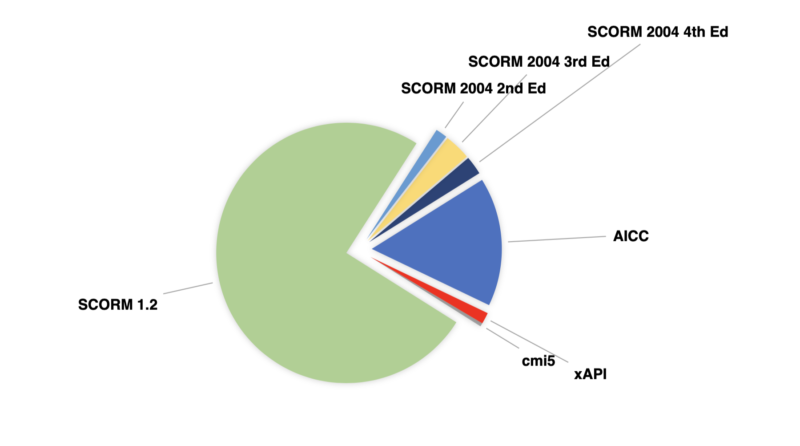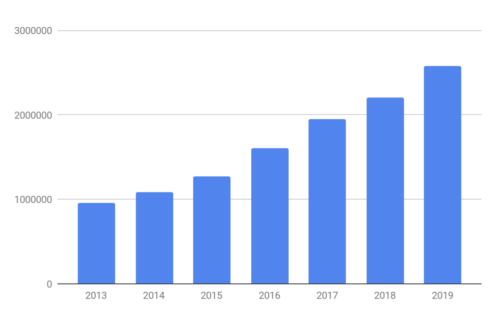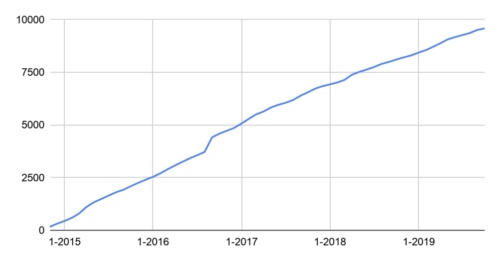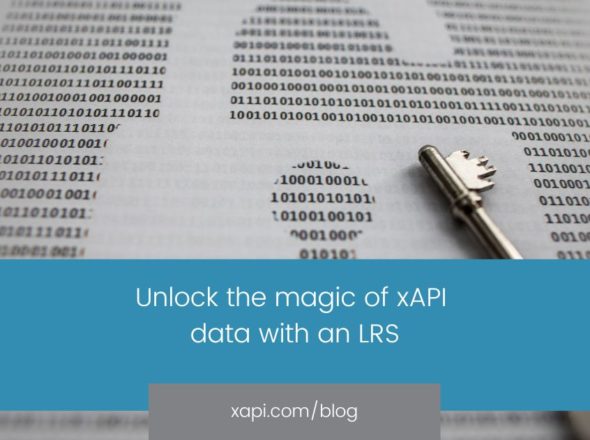Here at Rustici Software we’re in a unique position in the industry as we provide eLearning standards support for hundreds of learning platforms and have more than 1,500 SCORM Cloud customers, plus over 30,000 active trial users who use to test and deliver content. This perspective allows us to be able to pool a meaningful representation of how others are using xAPI. We shared our numbers at DevLearn’s xAPI Camp and contributed to Megan Torrance’s recent eLearning Guild research paper on 2019: The State of xAPI Adoption. And now we’d like to share with you, our readers, these metrics about how people are using xAPI in our products.
Packaged content
Since 2012 when xAPI (then Tin Can API) was first released, we have seen 27,000 xAPI course packages uploaded to SCORM Cloud. Each year the number of xAPI package imports doubles, with 9,000 unique xAPI packages added YTD. To date, 4,000 cmi5 course packages have been imported into SCORM Cloud.
While we’re seeing an increase in the number of xAPI packages added to SCORM Cloud each year, SCORM 1.2 is still the most commonly used standard. In most cases, SCORM 1.2 provides enough data and is still the most widely supported standard found in LMSs globally as the de facto eLearning standard.

xAPI statements
In 2019, more than 2.5 million xAPI statements have been posted to the SCORM Cloud LRS from external, non-launched activities. This has increased 150% compared to three years ago.

More connections
We’ve also seen continuous growth in the number of external platforms, such as other LRSs or BI tools, configured to send and receive xAPI statements from the SCORM Cloud LRS.

Seeing the increasing number of connected tools and systems sharing xAPI statements is a good indicator of users aggregating data across their ecosystems. Whether they want to see what’s happening outside of the LMS or pulling in data from other experiences beyond traditional eLearning courses, people are looking to see the bigger picture of the whole learning experience.
xAPI adopters
We’ve seen an increasing number of eLearning software and applications that support xAPI across the industry. As of today, there are 23 ADL conformant LRSs and 43 vendors listed on ADL’s xAPI adopters registry. Additionally, we have more than 200 products and services listed on our own xAPI.com adopters directory.
While the number of vendors that support xAPI has been increasing, the variety of tools that support xAPI has also grown. We’re now seeing new products like simulators, mobile apps and gaming platforms emerge in the learning tech market. More vendors who support xAPI enables more end users to utilize xAPI’s capabilities, encouraging widespread adoption.
Underutilized features
Even though xAPI adoption continues to grow, there are still features that remain underutilized. Two main areas for the xAPI community to focus on improving are xAPI Profiles and xAPI statement signing.
xAPI Profiles provide the basic rules of engagement when it comes to statement structure. Making use of xAPI Profiles allow people building xAPI tools and using the data produced by those tools to know exactly what is expected of them and more easily make sense of the data. xAPI statement signing enables the validation of xAPI data by allowing you to know who sent the data and validate that it hasn’t changed. Both of these things are what we believe would bring consistent use of xAPI and encourage more adoption.
If you’re interested in seeing all of the charts and graphs that go along with these xAPI adoption metrics, you can view TJ Seabrooks’s presentation slides from his talk at xAPI Camp at this year’s DevLearn conference. As always, if you have questions about xAPI or want to dig further into the adoption data, let us know, we’d love to chat.


